|
Program Director's Corner: Introduction
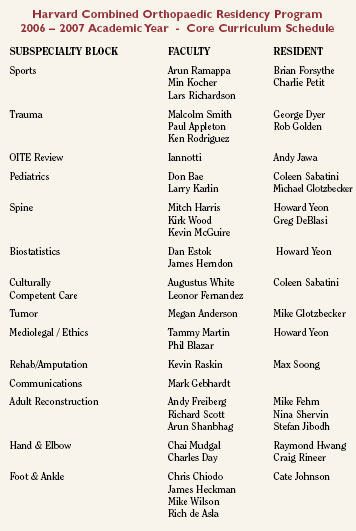 In March we matched 12 great students into our residency program, which now completes our expansion to 60 residents (12 per year). The research rotation, 2 months for PGY4s, is going well and this year the PGY5s will begin a one-month elective.
In March we matched 12 great students into our residency program, which now completes our expansion to 60 residents (12 per year). The research rotation, 2 months for PGY4s, is going well and this year the PGY5s will begin a one-month elective.
In February the Partners Education Committee conducted an internal review of our residency program. This is an ACGME requirement that occurs midway between the cycle of site visits by the RRC in orthopaedic surgery, our next site visit is scheduled for the summer of 2009. The following is a summary of the eight commendations and the ten recommendations. It demonstrates the changes as well as the issues facing all graduate medical educations program today, it is a changing world.
COMMENDATIONS:
- Program leadership/faculty/coordinator devoted to program. 2) Program Director: high morale of trainees and “hands on” interactive management of the program.
- Program Director: making thoughtful changes and decisions based on feedback from faculty and trainees.
- Program for teaching residents about competencies and inclusion of core competency language into assessment forms and resident portfolios.
- Program leadership/faculty for building a strong core didactic series of lectures and a valuable Journal Club.
- Program for diversity of residents. 7) Program Director for time/comprehensive preparation of the “Program Director’s Questionnaire”. 8) Program is in substantial compliance with institutional requirements & RRC specialty require ments, the educational goals and objectives are being met as provided by trainees’ comments and written materials provided to the committee.
RECOMMENDATIONS:
- Funding be made available as appropriate to further support efforts toward balancing the workload versus the educational requirements of the program, including
but not limited to, hiring of additional clinical providers (NPs and/or PAs) to assist with the increasing
patient loads and the 10-hour duty hours’ rule—
as well as additional support staff to manage the
rising volume of physicians. We also recommend that
the job descriptions of additional clinical providers
be written with a “team care” attitude.
-
Program to encourage faculty and residents to report
safety and quality issues and develop a model or forum
for addressing those issues that need a system’s
approach. The method at Children’s Hospital may be
one such model.
-
Program Director should continue his efforts in
managing the duty hour non-compliance, especially
the 10-hour rule with GMEC leadership and faculty.
-
Attempt to find incentives for surgical faculty to teach
residents, to better balance operative independence
and supervision so that our trainees graduate with as
high a skill level as previous generations, despite duty
hour limits.
-
Continue efforts in education teaching faculty on how
to give constructive, formative verbal feedback during
the procedures.
-
Develop a standardized method for faculty to
communicate with the P.D. when individual residents
need additional help or practice. The individual who
needs more assistance should meet with the P.D. in a
timely manner to develop an individualized plan to set
up a set of experiences that will get the resident up to
speed.
-
Program continues its efforts to incorporate creative
methods of teaching, such as the hands-on skills lab
or other simulation programs to better teach technical
skills.
-
The committee fully supports the Program Director’s
efforts to create longer rotations, thereby developing
more meaningful relationships for mentoring and
teaching.
-
Program Director and leadership should create and
incorporate core competency language into the
overarching Goals and Objectives (i.e. goals by the
year of residency). Additionally, the program leadership
should standardize the rotational goals and objectives
(by program year) and incorporate core competency
language.
- Program leadership should ensure that the resident and faculty are trained to recognize and prevent sleep deprivation (GME office provided the program).
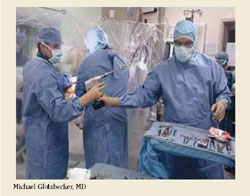 As you may recall, I discussed briefly in my last “Corner” our efforts to assess our residents’ performances in the ACGME’s six Core Competencies. We have expanded the list of measurement methods and have begun to require that each resident assemble a “Portfolio” of his/her accomplishments in the six Core Competencies. I want to personally congratulate and thank each of our residents for assembling outstanding individual portfolios on their first attempts. They are terrific. It is, however, just another administrative burden on our residents, added on to the required paperwork they must complete in patient care as well as their surgical logs and duty hour reports. I guess this just begins to prepare them for the increasing administrative/paperwork hassles every one of us experiences daily in our practices. I have asked the residents to add one new example in their portfolios in each of the six Core Competencies twice yearly when I meet with them for their biannual evaluation. My plan is to increase their efforts slowly over time so that, when we have our next site visit, each resident’s portfolio will have about six examples of his/her assessment in each category. Of course, the next steps, over the next 5 to 10 year, will be to develop more accurate objectives and validated outcomes measurement tools for each competency.
As you may recall, I discussed briefly in my last “Corner” our efforts to assess our residents’ performances in the ACGME’s six Core Competencies. We have expanded the list of measurement methods and have begun to require that each resident assemble a “Portfolio” of his/her accomplishments in the six Core Competencies. I want to personally congratulate and thank each of our residents for assembling outstanding individual portfolios on their first attempts. They are terrific. It is, however, just another administrative burden on our residents, added on to the required paperwork they must complete in patient care as well as their surgical logs and duty hour reports. I guess this just begins to prepare them for the increasing administrative/paperwork hassles every one of us experiences daily in our practices. I have asked the residents to add one new example in their portfolios in each of the six Core Competencies twice yearly when I meet with them for their biannual evaluation. My plan is to increase their efforts slowly over time so that, when we have our next site visit, each resident’s portfolio will have about six examples of his/her assessment in each category. Of course, the next steps, over the next 5 to 10 year, will be to develop more accurate objectives and validated outcomes measurement tools for each competency.
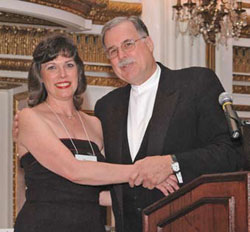 Well, as all Saturday teaching conferences have gone by the wayside—no one likes to work on weekends—I have discontinued my longstanding (more than 25 years) breakfast meetings with the residents. I have replaced it with a monthly luncheon meeting (after CORE) with all residents and continued the sessions on the “business of orthopaedics” and other important issues facing our profession.
Well, as all Saturday teaching conferences have gone by the wayside—no one likes to work on weekends—I have discontinued my longstanding (more than 25 years) breakfast meetings with the residents. I have replaced it with a monthly luncheon meeting (after CORE) with all residents and continued the sessions on the “business of orthopaedics” and other important issues facing our profession.
Our residents continue to serve in leadership roles: Our American Academy of Orthopaedic Surgeons’ resident liaison member this year has been George Dyer. The baton has been passed to Courtney Dawson. Our American Orthopaedic Association leadership participant this year is Steve Mattheos. Recently Manish Sethi was elected as a delegate to the Massachusetts Chapter of the American Medical Association.
The HMS graduating class of 2007 nominated three of our residents as “Best Teaching Residents”: Christina Boulton, John Kwon and Michael Vazquez. Congratulations to all! And in the photograph you see Mike Glotzbecker operating at BIDMC, reducing and stabilizing a fractured hip in an elderly patient. This photo was published in the Globe in their recent six-part series on fractures in the elderly.
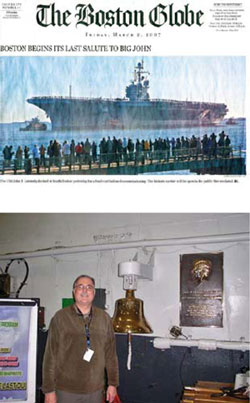 New offices for our program director and program coordinator are being constructed on White 5, just below the Smith-Peterson Orthopaedic Library. This should be our permanent home for some time. Diane has a new associate, Anna Cipollone, a long-needed position to assist Diane in the unbelievable amount of paperwork and computer documentation of complex issues, such as web-based ACGME programs, documentation of all kinds and a new computer program for assessment of residents, faculty and teaching services (New Innovations). The administrative hassle of a residency program director and residency coordinator just keep compounding almost exponentially. Diane, along with other orthopaedic residency coordinators from ARCOS (Association of Residency Coordinators in Orthopaedic Surgery), took their first certifying examination: The National Board of Certification Training Administrators of Graduate Medical Education (TAGME). Diane passed! Please congratuate her. Only 50% of the coordinators passed this tough two-part examination. The world of postgraduate medical education continues to change and evolve with increasing documentation required, increasing accountability, increasing requirements and increasing personnel needed to accomplish all the tasks required in a residency program director’s office.
New offices for our program director and program coordinator are being constructed on White 5, just below the Smith-Peterson Orthopaedic Library. This should be our permanent home for some time. Diane has a new associate, Anna Cipollone, a long-needed position to assist Diane in the unbelievable amount of paperwork and computer documentation of complex issues, such as web-based ACGME programs, documentation of all kinds and a new computer program for assessment of residents, faculty and teaching services (New Innovations). The administrative hassle of a residency program director and residency coordinator just keep compounding almost exponentially. Diane, along with other orthopaedic residency coordinators from ARCOS (Association of Residency Coordinators in Orthopaedic Surgery), took their first certifying examination: The National Board of Certification Training Administrators of Graduate Medical Education (TAGME). Diane passed! Please congratuate her. Only 50% of the coordinators passed this tough two-part examination. The world of postgraduate medical education continues to change and evolve with increasing documentation required, increasing accountability, increasing requirements and increasing personnel needed to accomplish all the tasks required in a residency program director’s office.
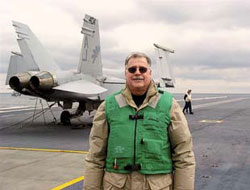 On a personal note, I was fortunate to have been selected, along with a small group of physicians, to make the last voyage on the U.S. Aircraft Carrier John F. Kennedy. A group of us, including some of the sailors who were on its initial voyage, met in Norfolk, Virginia and boarded the carrier for its final four-day trip to Boston before retirement. It was a wonderful experience. But imagine being at sea for six months on this floating city containing over 5,000 personnel, serving 16,000 meals/day, desalinating sea water at 350,000 gallons/day and carrying over 80 fighter jets in its interior! The JFK saw service in the first Gulf War, the Libyan crisis and the war in Afghanistan. It is one of only two remaining fossil-fueled carriers in the Navy today. It will be mothballed and stored at Philadelphia. While in Boston on the weekend of March 2, 2007, 51,000 people toured the carrier and Senator Edward Kennedy celebrated his birthday with family and friends Friday evening.
On a personal note, I was fortunate to have been selected, along with a small group of physicians, to make the last voyage on the U.S. Aircraft Carrier John F. Kennedy. A group of us, including some of the sailors who were on its initial voyage, met in Norfolk, Virginia and boarded the carrier for its final four-day trip to Boston before retirement. It was a wonderful experience. But imagine being at sea for six months on this floating city containing over 5,000 personnel, serving 16,000 meals/day, desalinating sea water at 350,000 gallons/day and carrying over 80 fighter jets in its interior! The JFK saw service in the first Gulf War, the Libyan crisis and the war in Afghanistan. It is one of only two remaining fossil-fueled carriers in the Navy today. It will be mothballed and stored at Philadelphia. While in Boston on the weekend of March 2, 2007, 51,000 people toured the carrier and Senator Edward Kennedy celebrated his birthday with family and friends Friday evening.
|

